Hephaestus | Greek God

Hephaistos (ancient Greek Ἥφαιστος Hḗphaistos, Latin Hephaestus, dialect Hephäst) is the god of fire, forging and volcanoes in Greek mythology. Hephaistos corresponds to the later Roman Vulcanus. He is one of the twelve Olympian deities.
Hephaistos was "responsible" for the entire artistic spectrum of metalworking, including the production of jewelry, weapons, sacred-ritual and profane utensils. The temple of Hephaistos dedicated to him in the center of Athens is one of the best preserved Greek temples.
Myth
The son of Zeus and Hera (or produced by Hera in parthenogenesis), because he was born small, ugly and screaming or already lame, was hurled from Olympus by his mother and fell into the Okeanos near the island of Lemnos - by some ancient sources the lameness is only explained by the fall.
There he was rescued, nursed back to health and raised by the sea nymphs Thetis and Eurynome. From them he learned the art of blacksmithing and made jewelry for them. His cult had originated from Lemnos because of the volcanic activity of that island, and the Romans located his workshop under Mount Etna.
Grown up, he sent his mother a golden throne. When Hera sat on it, she was tied up and no one could free her. After the efforts of other gods failed to persuade Hephaestus to return to Olympus, Dionysus intoxicated Hephaestus with wine, tied him to a donkey, and transported him back to Olympus. The return of Hephaistos is a pictorial motif on numerous vases.
According to another account, Hephaistos is said to have supported the mother during a quarrel between Zeus and Hera, whereupon the father grabbed him by the foot and threw him down from Olympus. A Thracian tribe, the Sintoi, who had emigrated to Lemnos (where Hephaistos fell into the sea), nursed him back to health, but a limp remained.
To reconcile, Zeus decided to give him Aphrodite as a wife. However, Aphrodite cheated on him with Ares, among others. Hephaestus learned of this and made an elaborate, indestructible net, which he attached to the marital bed.
When - according to Homer - Aphrodite and Ares were enjoying themselves in the bed, they were caught in this net, and Hephaestus summoned the other gods, who burst into a roar of laughter at the sight, the proverbial "Homeric laughter". Thereupon Hephaestus and Aphrodite separated.
The workshops of Hephaistos were located under the Vulcanon on Lemnos, where the Cyclopes were his journeymen smiths. Further assistants were Bia (= power) and Kratos (= strength).
He proved to be an obstetrician when Athena sprang from Zeus' head ("Hephaestus' blow"). In gratitude, Zeus is said to have given him Athena as a bride.
Athena disappeared, however; when Hephaistos had caught up with her and was about to unite with her, according to the library of Apollodorus, his seed fell on the thigh of the goddess, who wiped it away with a scrap of wool (ἔριον érion, German 'wool') thrown on the earth afterwards.
Thus Erichthonios, the legendary hero of the Athenians, was born of Gaia ('earth'). According to Augustine, who offers another folk-etymological explanation of the name, the name component Eri- comes from ἔρις éris, German 'quarrel' - the quarrel between Hephaistos and Athena.
Aglaia, one of the three Charites (daughters of Zeus and Eurynome), is also said to have been impregnated by the "glorious limp-foot" Hephaistos. Hesiod, however, conceals the name of the child.
The sculptor Ardalos is believed to be his child, moreover the club-wielding robber Periphetes, whom Theseus slew.
Works of Hephaestus
In his underground forge, Hephaestus makes his most famous works, the attributes of the gods and weapons of heroes:
two mechanical (golden) servants
Gate of the palace and brazen halls on Olympus as the dwelling of the gods
Throne for Hera with invisible fetter
scepter and thunderbolt for Zeus
the chariot of Helios
the necklace of Harmonia
the aigis of Athena
the fire-breathing bulls of Aietes (on behalf of Zeus)
figure of Pandora (as wife for Epimetheus)
Bow of Artemis
Arrows for Apollo and Artemis
Catch net for his wife Aphrodite, unfaithful with Ares
Chain to bind Prometheus to the Caucasus
the armor of Ares
Arms and shield of Achilles (on behalf of Thetis)
shield of Aeneas (on behalf of Aphrodite)
Talos, the bronze giant who guarded Crete
Bidentacle of Hades
Trident of Poseidon
Forge gods in other cultures
Hephaistos is the only manual worker among the Olympian deities. This could point to a religious meaning of forging. The topos of the "forge god" also occurs in Finnish mythology (Ilmarinen), and a "lame blacksmith" appears in Germanic legend (Wieland the Smith).
This has led to the assumption that this is a European wandering motif. The Brothers Grimm found a similarity to the Nordic Loki. More likely, however, is a relationship to Asia Minor and Syrian blacksmith gods, such as Pygmalion, Kinyras, and Kothar.
See the main article: Blacksmith in culture.
Art
The forging Hephaistos is often depicted in the visual arts even after antiquity, for example by Tintoretto, Bassano, Rubens, Tiepolo, Velázquez and van Dyck.
